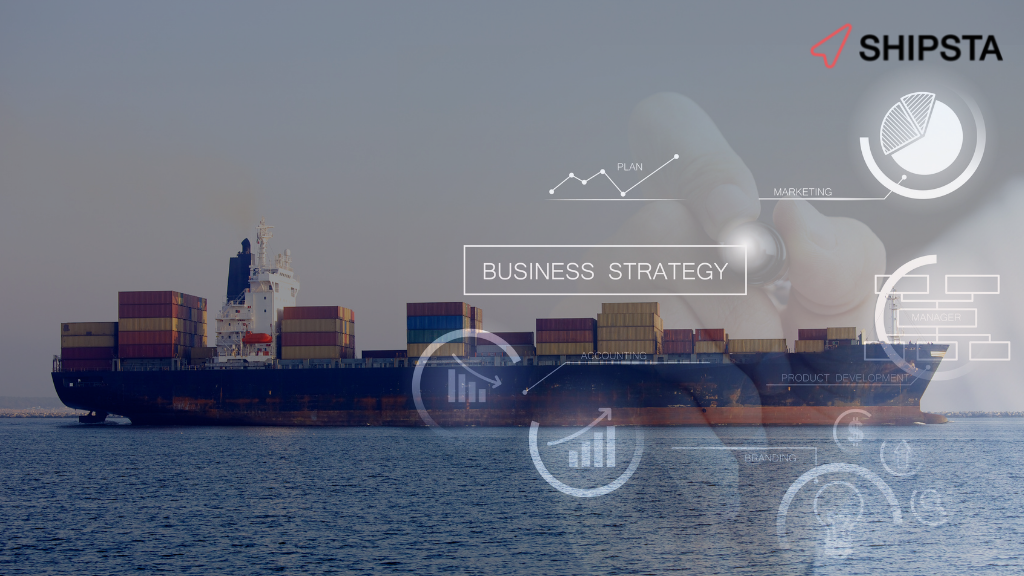In the world of freight procurement, the tools we use can make or break our efficiency. I experienced this myself first-hand for far too long across far too many ".xlsx"s and even ".xls"s. As a procurement lead at Kühne + Nagel for X years, I was on the front line of answering dozens of tenders every single year.
Like every procurement professional, it came down to Excel.
For years, Excel has been the go-to solution for managing tenders and analyzing rates. Even today, recent research we conducted found that 75% of procurement pros are still dependent on spreadsheets regularly.
However, as the logistics landscape becomes increasingly complex, many procurement professionals are finding that spreadsheets can no longer keep up with the demands of modern freight management. I certainly couldn't. I would sit at my desk with two computers, one for number crunching in six-hour sprints (that would nearly always error at the end) and another for my actual work. Even exporting from other platforms for analysis in Excel fails to excel as a solution.
It's not sustainable.
And it's time for procurement to (v)look up and face reality.
Here's why Excel doesn't work anymore and how the industry needs to adapt, focusing on:
- Data Cleansing
- More frequent tenders
- Leveraging real-time market intelligence
- Vendor management
The Data Cleansing Nightmare
One of the most painful exercises in freight procurement is data cleansing.
Imagine this scenario: you've just received RFP responses from dozens of logistics service providers (LSPs). Each one has its own unique twist on your carefully crafted Excel template:
- Company A added an extra column for a new surcharge (BAFlling)
- Company B inserted a row to explain their pricing structure ("Red Sea closure")
- Company C used two-letter Unicode country codes while Company D spelled out full country names
- Company E decided to color-code their cells for "clarity"
Now, you're faced with the Herculean task of consolidating all this data into a single, coherent format. It's not just time-consuming; it's a recipe for errors and inconsistencies.
I once received 70 different Excel documents for RFPs, each containing vital shipment data. Merging this data into a usable format took weeks. By the time I finished, the market had probably already shifted, rendering much of the analysis outdated.
From Annual Excels to Daily Dilemmas
That doesn't happen once a year now either.
Ten years ago, everything in freight procurement was relatively smooth. We tendered once a year, set our rates, and we were done.
Data via Freightos Terminal
Today, we're dealing with monthly rate updates, new surcharges popping up regularly, and a level of market volatility that makes annual tenders and the freight tender process look like relics of a bygone era. Now compare that to current market volatility, looking at just the last year of Freightos Terminal's annual freight index.
Take a look at those swings. We're talking 5x growth in just months, with each spike representing dozens, if not hundreds, of tenders left on the side of the road... and behind each is a flurry of spreadsheets going back and forth.
Moreover, there's been a significant shift towards spot procurement. As one procurement professional put it, "Some of the shippers and even large shippers are not even doing this contract buying anymore because they're saying that these rates will anyway not be accepted... and that's why they push most of the business via spot requests or talk deliveries."
This shift creates a new challenge: the headache of importing and analyzing spreadsheets for tenders, once manageable on an annual basis, becomes a daily nightmare. Imagine trying to run those six-hour Excel calculations every day. It's simply not feasible.
Real-Time Analysis in a Turbulent Market
In today's freight market, real-time analysis isn't just nice to have; it's essential for survival. Consider recent events:
- Geopolitical tensions in the Red Sea disrupting shipping routes
- Extreme weather events causing port closures and delays
- Rapid fluctuations in fuel prices affecting shipping costs
These factors can change transit times and prices in the blink of an eye. Procurement professionals need to:
- veMonitor these changes in real-time
- Compare current market conditions with vendor data
- Make quick decisions to optimize routes and costs
Forget the challenges of getting all the RFP data into one clean spreadsheet. Comparing it to real-time market conditions on a lane-level basis becomes an exercise in futility (or Macros with enough firepower to land the lunar module). Excel simply wasn't designed for this level of dynamic analysis. By the time you've updated your spreadsheet, the data is already outdated.
Ready to scale your procurement skills?
The Vendor Management Puzzle
Another challenge that Excel struggles with is vendor management. In today's complex supply chains, we're constantly looking for new multimodal vendors while trying to maintain relationships with existing ones. This creates several issues:
- Keeping track of current providers and their capabilities
- Adding new vendors to the mix without disrupting existing processes
- Tailoring RFP sheets for different vendors to avoid redundant work
- Providing invoicing clarity when managing multiple versions of tenders with constant updates
With Excel, this often means maintaining multiple spreadsheets, each with its own version of vendor data. It's a recipe for confusion and inconsistency.
The Human Element in Digital Procurement
Let's be clear: technology should augment human relationships, not replace them.
Spreadsheets have always been a tool to support our work, not define it. As we move beyond Excel, we need to ensure that new technologies continue to serve this purpose. Just as global acceptance of email reduced the need for constant phone calls, new procurement platforms can eliminate the need for attaching CSV files to every communication. We can deal online, in real-time, with up-to-date data at our fingertips. This shift allows procurement professionals to focus on what really matters: building strategic relationships, negotiating effectively, and making informed decisions that drive value for their organizations.
Making the Transition: How to Ditch Excel (Without Losing Your Mind)
Moving away from Excel isn't just about adopting new software; it's about changing how we think about procurement processes. Here are some key steps:
- Identify what Excel does well for your team. Is it the familiar interface? Can it provide powerful pivot-table-like analysis? The ability to quickly sort data? Make sure your new solution can replicate these strengths.
- Look for solutions that address Excel's weaknesses, like real-time collaboration, automated data cleansing, and integration with other systems.
- Prioritize user-friendly interfaces. The last thing you want is to replace one complex system with another.
- Plan for data migration. How will you transfer years of historical data from spreadsheets to a new system?
- Invest in training or find a partner that can help roll out solutions. Even the best system will fail if your team doesn't know how to use it effectively.
Remember, the goal isn't to lose the flexibility and familiarity of spreadsheets, but to gain power, speed, and accuracy that Excel simply can't provide in today's fast-paced freight market.
Looking Ahead
As the freight market continues to evolve, so too must our tools and processes. While Excel has served the industry well for many years, it's becoming clear that more specialized solutions are needed to navigate the complexities of modern freight procurement.
By embracing these new technologies, procurement professionals can position themselves and their organizations to respond more effectively to market changes, make more informed decisions, and ultimately drive greater value in their logistics operations. It's time to move beyond the two-computer tango and embrace solutions that can keep pace with the dynamic world of freight procurement. Your future self (and your IT department) will thank you.



